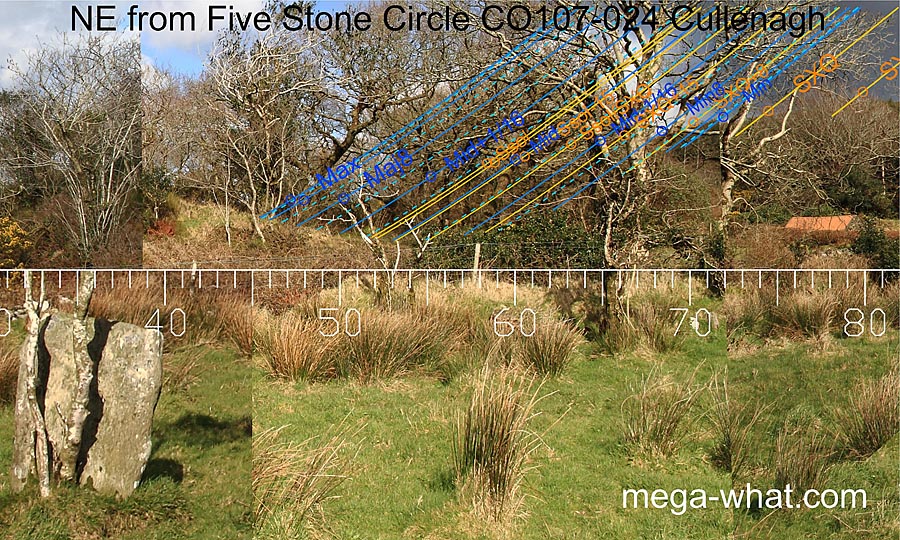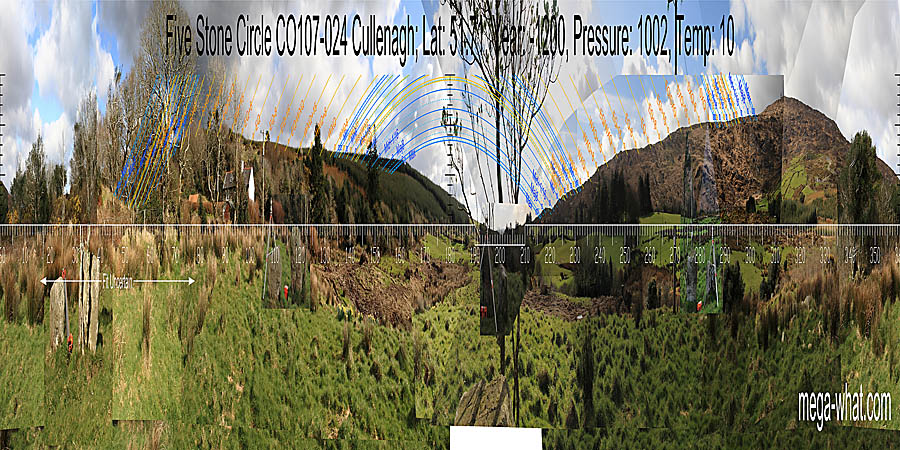 Cullenagh Stone Circle is about 7km to the north of Drimoleague and 8km west of Dunmanway.
Just south of a N/S watershed, it is on a level terrace above the valley floor and only two stones remain. Veiled by north-eastern trees is an approximate bi-lateral symmetry of shape.
Cullenagh Stone Circle is about 7km to the north of Drimoleague and 8km west of Dunmanway.
Just south of a N/S watershed, it is on a level terrace above the valley floor and only two stones remain. Veiled by north-eastern trees is an approximate bi-lateral symmetry of shape.
South is on the eastern slope of a dip [Pic].
North is on the western slope of a dip [Pic].
The north-east is obscured by trees and unsurveyable but clearly the major end of the lunisticeLunistices are the most northerly and southerly moons of the month. The lunar equivalent of solstices - more. range is in a dip at the bottom of a slope that runs up to something beyond the cross-quarters.
About 400m away in this direction and higher up the valley side is Cullenagh Stone Row, which was probably earlier as it is both higher and a better site.
 To the east, a long ridge that has been planted with forestry does not offer many accurately surveyable points either.
The hilltop is close to being a quarter-month before the summer cross-quarter but the most obvious thing about it is that the equinox falls at the hill's south base.
To the east, a long ridge that has been planted with forestry does not offer many accurately surveyable points either.
The hilltop is close to being a quarter-month before the summer cross-quarter but the most obvious thing about it is that the equinox falls at the hill's south base.
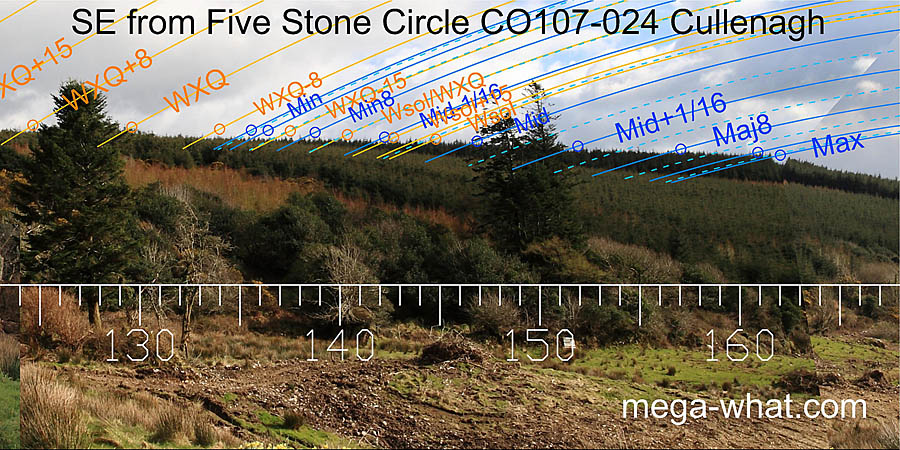 The south-east is also shrouded in trees but the major standstillLunistice positions vary cyclically over an 18.6 year period but are fairly static for more than a year at either end of the range
would seem to be more or less at the ridge end, before the slope down into the valley bottom.
The south-east is also shrouded in trees but the major standstillLunistice positions vary cyclically over an 18.6 year period but are fairly static for more than a year at either end of the range
would seem to be more or less at the ridge end, before the slope down into the valley bottom.
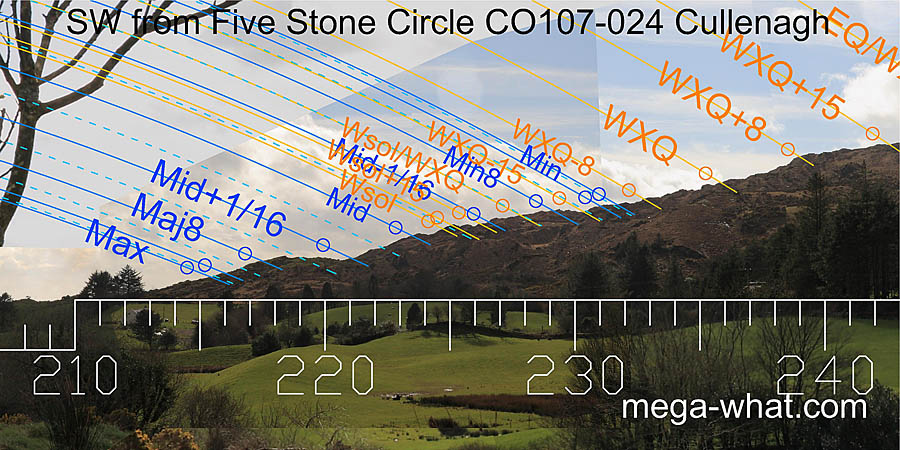 To the west is Nowen Hill and the rugged slopes of its southern ridge provide many useful markers.
To the west is Nowen Hill and the rugged slopes of its southern ridge provide many useful markers.
 Higher up, the ridge is smoother but the equinox and the half-way points between it and both cross-quarters fall at prominent points.
Higher up, the ridge is smoother but the equinox and the half-way points between it and both cross-quarters fall at prominent points.
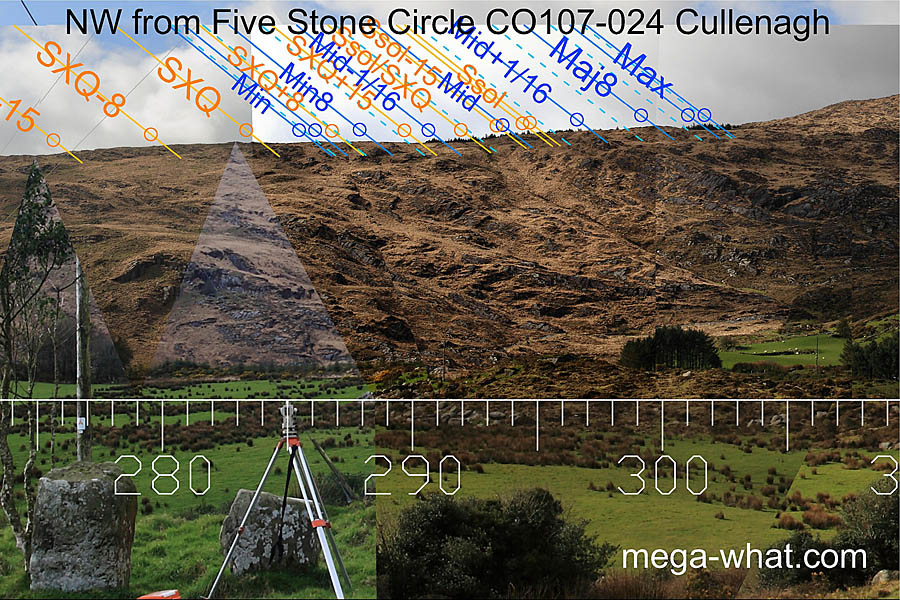 Higher again and potential markers are even smaller but clear because rocky. The major lunar limit is at the foot of the summit and both the major eighth and minor limit are at obvious humps.
Higher again and potential markers are even smaller but clear because rocky. The major lunar limit is at the foot of the summit and both the major eighth and minor limit are at obvious humps.
The cross-quarter / minor standstillLunistice positions vary cyclically over an 18.6 year period but are fairly static for more than a year at either end of the range setting positions are clearly indicated by the orientation of the two remaining stones.
- Clodagh Five Stone Circle is 2km to the south-south-east.
- Inchireagh Five Stone Circle is 5.9km to the north-east.
References
- Archaeological Survey of Ireland, record details. www.archaeology.ie/archaeological-survey-ireland
- POWER, D. et al. 1992 Archaeological Inventory of County Cork, Volume 1: West Cork. Dublin: Stationary Office. p24, no.71.

